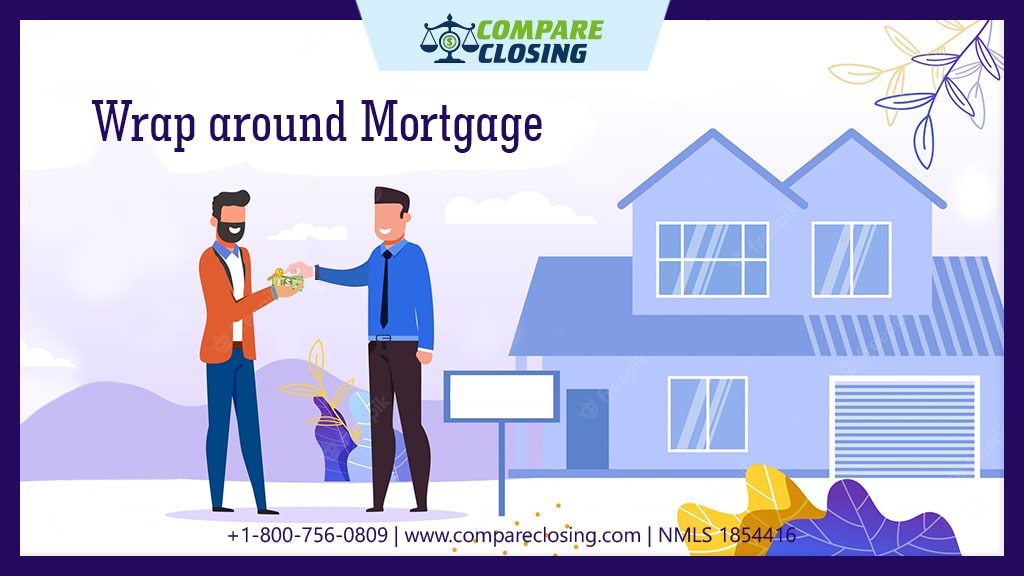Table of Contents
- What Are Netting Escrows & How Does It Work?: The Best Guide - January 2, 2024
- The Secret About Prescriptive Easement: Top Guide 1 Must Know - December 4, 2023
- About Home Equity Loans In Texas And How Can One Obtain It - November 27, 2023
About Wrap Around Mortgage
Everything works well in real estate purchase transactions for both buyer and seller if the buyer qualifies for a mortgage.
However, sometimes the buyer could face challenges qualifying for a traditional mortgage and could lose an opportunity to purchase the home.
Though this situation could be the end of the road for both buyer and the seller, there are other financing options where both parties could benefit.
One such option is a wrap around mortgage. In this post, we will understand what is a wrap-around loan in detail.
What Is A Wrap-Around Mortgage?
A wrap around loan, also known as a carry-back loan, is a type of owner or seller financing.
The buyer receives financing that includes, or “wraps around”, the seller’s current mortgage on the property.
The buyer pays the seller, who pays the lender that holds the primary mortgage and keeps the difference amount.
In most cases, a wraparound loan will have a higher interest rate than the current seller’s current mortgage, so the seller can cover the cost and still make a profit.
Deeper Definition Of Wrap Around Mortgage
The type of financing that the wraparound loan is based on is the one that is most often used in seller financing.
The only difference in this type of seller financing is that it combines the seller’s current mortgage with the buyer’s new mortgage.
In typical seller financing, the buyer pays the monthly payments including the principal and interest to the seller.
This type of financing carries a lot of risk for the seller and often requires a higher than usual down payment.
In a seller’s financing, the agreement is based on a document that specifies the terms of the financing known as a promissory note.
In addition, this type of financing does not require the principal to change upfront; the seller receives the principal and interest directly from the buyer through monthly payments.
The wrap-around mortgages can be risky for sellers since they bear all the risk of default on the loan.
Sellers should also make sure that their current home loan does not have an alienation clause.
This clause obliges the seller to repay the lender in full if the title and ownership are to be transferred or the property is sold.
This clause is part of most of the mortgages due to which the possibility of getting a wrap-around mortgage is terminated.
How Does A Wrap Around Mortgage Work?
Wrap-around mortgages can be acquired only on assumable loans such as VA, USDA, and FHA.
Conventional mortgages are non-assumable, hence it will not allow a wrap-around loan to go through.
Both the buyer and the seller must agree to the wraparound mortgage, and the seller must get approval from the current lender holding the primary mortgage before starting the wrap-around loan process.
Once the terms of the loan are set, the seller has an option to transfer the title of the property to the buyer immediately or after the loan is paid off.
The buyer would be the owner of the property only once the title is transferred by the seller.
Wraparound mortgages are in a lower or second position on the home. So in case if buyer defaults on the mortgage and the property are foreclosed, the lender will receive the proceedings first and then the seller.
This means the lender will first recoup its money before the seller could recover his loss.
Example Of A Wrap Around Mortgage
Let’s assume a seller is selling a property for $200,000 and has a current mortgage balance of $50,000 at a 5 % fixed interest rate.
The seller decides to finance a buyer for $190,000 with $10,000 of down payments at a 7% fixed rate.
Now the buyer will pay the buyer for the new mortgage at a 7% interest rate to the seller, and the seller will pay the lender at a 5% interest rate and pocket the difference amount of the payments and the interest amount.
This way the seller makes an additional profit.
Conclusion
Wrap around mortgages can be a good option for the sellers who are unable to find the right buyers in a challenging buyer’s market.
For the buyers that are unable to qualify for traditional mortgages, this could be one of the best ways to become a homeowner.
A seller needs to ensure they understand the risk of a wrap around loan as in case of default the seller would be responsible to make payment to the lender for the original mortgage.
The buyers need to know that the interest rates would be usually higher than traditional mortgages.
Amanda Byford
Amanda Byford has bought and sold many houses in the past fifteen years and is actively managing an income property portfolio consisting of multi-family properties. During the buying and selling of these properties, she has gone through several different mortgage loan transactions. This experience and knowledge have helped her develop an avenue to guide consumers to their best available option by comparing lenders through the Compare Closing business.





